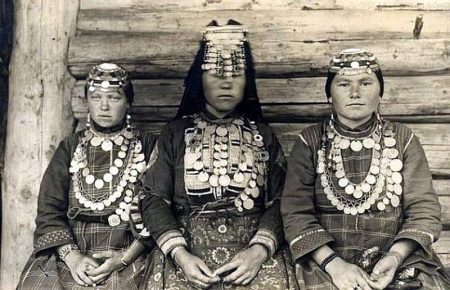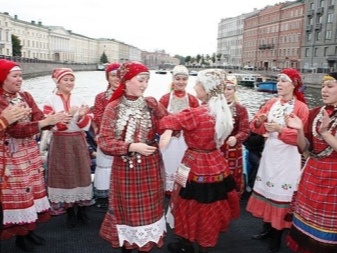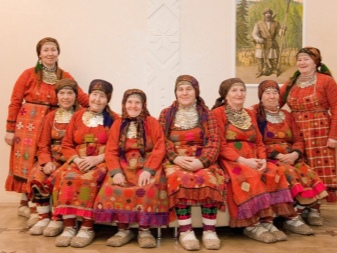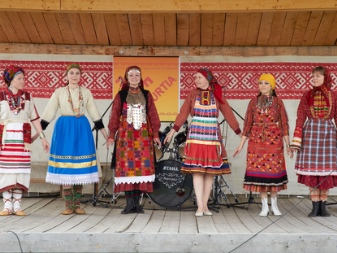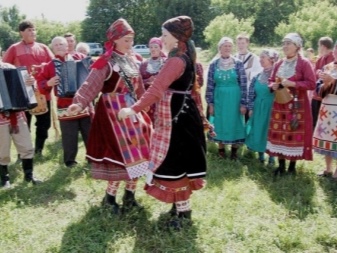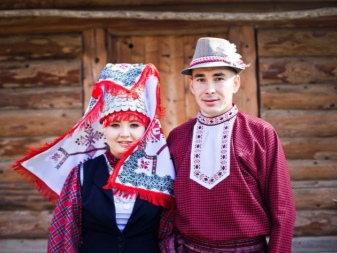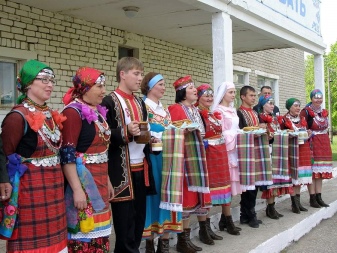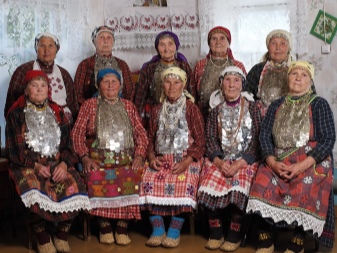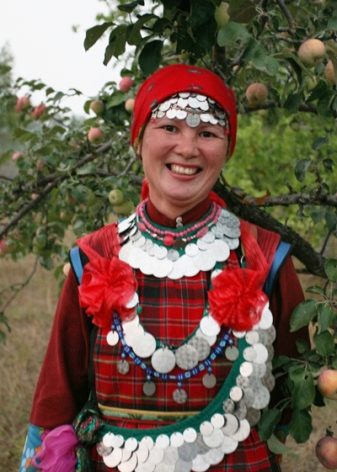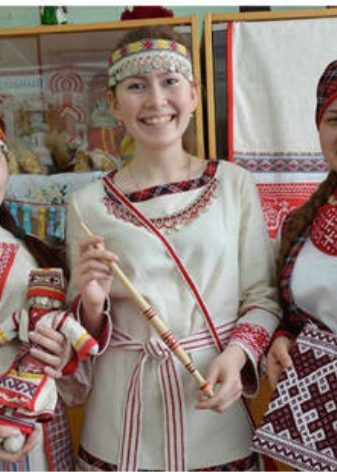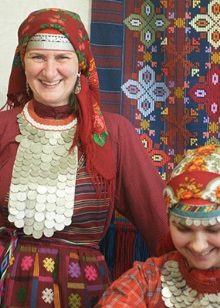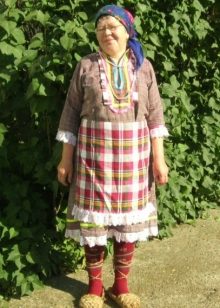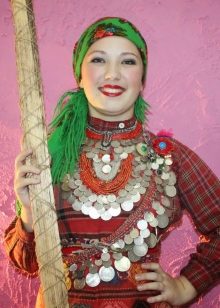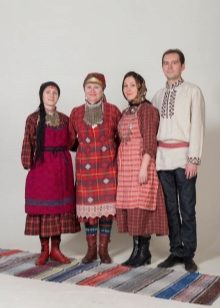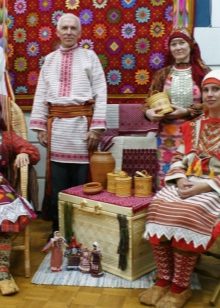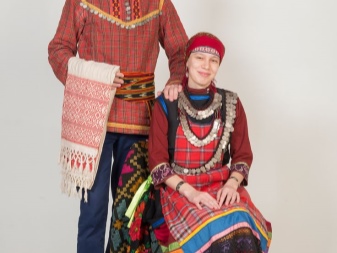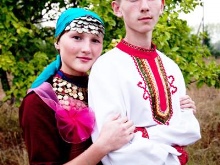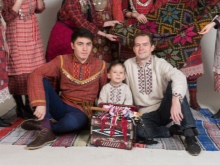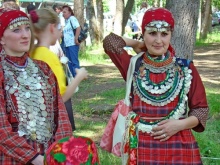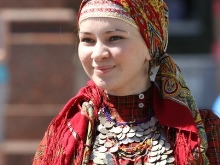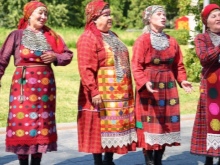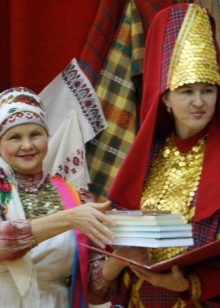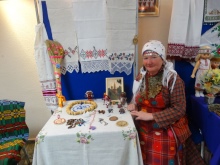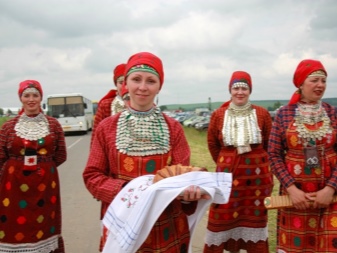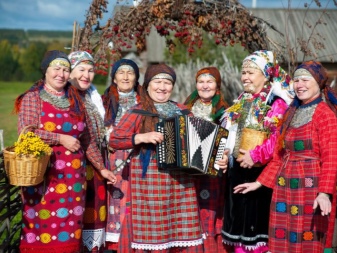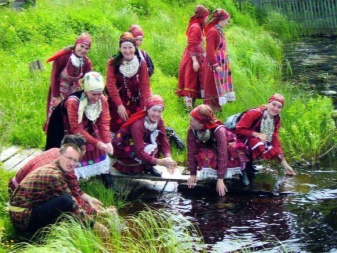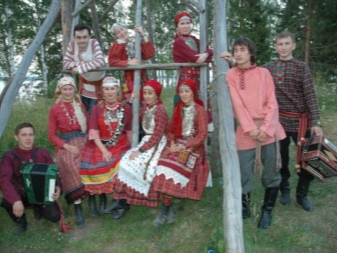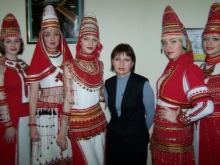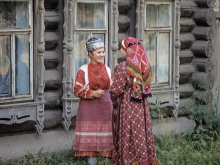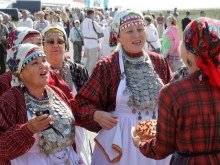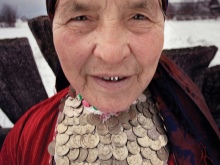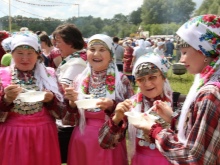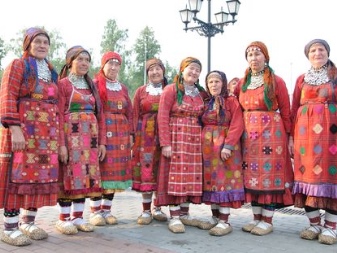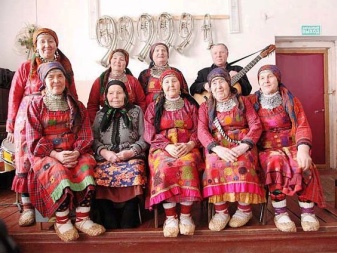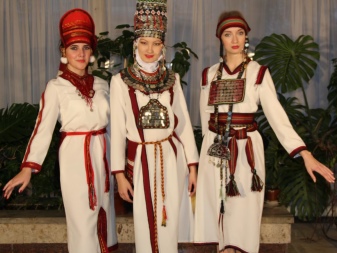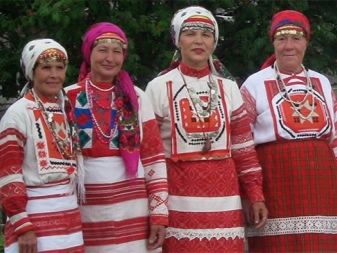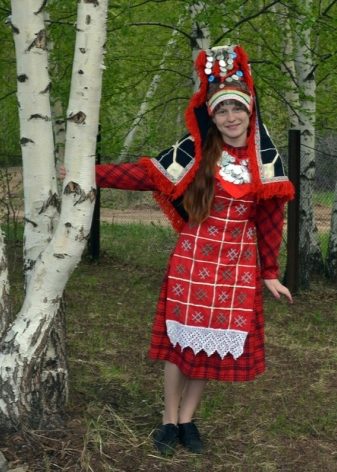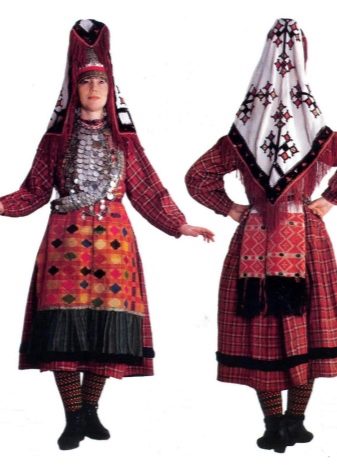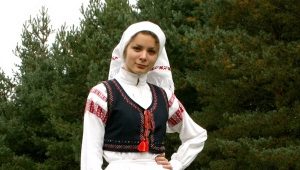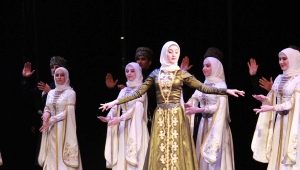National Udmurt costume
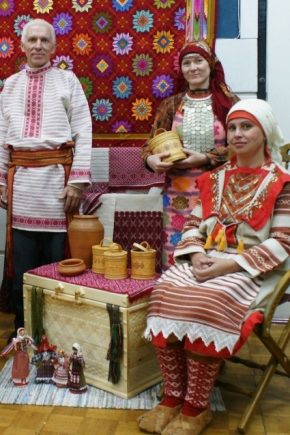
A bit of history
The national Udmurt costume is for its owner a kind of sheath that protects against external trouble. The very first clothes of the Udmurts had a style very similar to modern tunics. The material for sewing clothes was woven by hand: flax was used in the north, and hemp in the south. Occupation by animal husbandry made it possible for the Udmurts to use sheep wool as a raw material, from which wool fabrics were woven. The traditional South Udmurt shorthair is a shirt or a robe sewn from homespun wool fabric.
The color range of the national Udmurt costume consisted of white, gray, ocher, brown, red and indigo. Dyes were obtained from minerals and plants, and over time the Udmurts began to use aniline dyes, imported by the Turks who traded with Udmurtia. It should be noted that in the northern areas of Udmurtia, only two options were used: white and gray. In the southern part, the colors were more variegated and saturated, which is associated with the location of the trade routes, which were much more in the south than in the north. Remarkable is the fact that, often, the whole street could walk in red or green clothes sewn from the same fabric.
The appearance of satin and silk fabrics did not go unnoticed by Udmurt masters. Beautiful shirts and dresses were made of them. Girls who could not only weave and sew, but also had good taste, could rightly be called fashion designers. Creating a suit, they marked it with a special label: a bunch of threads (chuk). Other masters could copy a costume, but they had to indicate whose invention it was.
It is worth noting that the child until certain years did not have their own clothes. The first baby’s clothing is the mother’s shirt, if the girl was born and the father’s, if the boy was born. Until almost the age of three, children were wearing older clothes. Attention is paid to the fact that this was done not at all for reasons of economy, but because worn and washed clothes many times are much softer than new ones.
Over time, the national Udmurt costume began to move away into the background. Gradually homespun fabrics began to be replaced by factory ones. It happened in the post-war years, when they began to pay for labor in real money, and not production. Manual work during this period ceased to be in demand and was considered a sign of lack of wealth in the family. Despite this, homespun canvases have been preserved in many Udmurt houses, which have now regained their former value.
Features
For men
Male Udmurt national costume was very similar to Russian. It consisted of a white or later from a colorful canvas shirt to the knees (kosovorotka), which was picked up by a woven belt with beautiful patterns or a belt. Symbols related to the occupation were embroidered on men's shirts. On holidays and for prayer, they wore a wide rainbow-woven puto belt and long-legged pants, which were most often sewn from blue to white stripes. In winter, men wore caftans, which in the holiday version were cut to the waist and gathered, and in everyday life - uncut and without assemblies, but fitted.
For women
The main feature of the female Udmurt costume is its detailed differences depending on whether the woman lives in the north or in the south.
The women's national costume of the northern Udmurka, as a rule, is not complete without a tunic-like shirt (derem), a removable bib with embroidery (kabachi), a swinging robe (shorthair), a woven or woven belt and an apron without a breast (azkyshet). A bib with embroidery could have a festive occasion, for daily wear and for ceremonies. His appointment determined the character and wealth of embroidery. The wedding bib was decorated with an eight-pointed star (Tolez). As a rule, the clothes were sewn of white linen fabric from linen and sewn with red threads.
The national clothing of the southern Udmurka was made of colorful fabric. White outfits were used only for weddings. One of the variants of the southern costume is a dress-a-line with narrowed sleeves. A beautiful wide frill is sewn on the bottom of the dress. The chest is decorated with a removable bib with silver coins. In another design, it is a colorful shirt, with oblique lateral wedge-shaped details sewn to the central fabric, sleeves with wedges and quadrangular gussets, and a small stand-collar in such a suit was fastened with a hook or button.
During their first pregnancy, Udmurt women wore a red dress in a cage. People said that the more cells, the more children the future mother will have. Peculiar patterned amulets were necessarily embroidered on the apron. This outfit was quite spacious cut and others for a very long time could not guess that the woman is in position.
Accessories and shoes
The headdress of a Udmurt woman could tell about her marital status. In virginity, young Udmurts wore round or oval hats made of canvas (takya), which were trimmed with cotton cloth, beads and coins. Also, the girls covered their heads with kumcha or canvas headbands decorated with embroidery, ribbons, glitter and scarves. In another type of dress there was a headband with a volume bow made from a scarf.
Women who were already married, who lived in the north, besides scarves and headbands, tied an embroidered towel, and the southern Udmurts wore a headband, which was decorated with beads and coins along with a head towel, a cone-shaped Aishon and a syluk bedspread. The patterned ends of the towel played the role of a back decoration. Women's costumes intended for festive festivities were decorated with beads, coins, shells, from which necklaces and earrings were made.
Casual shoes for men and women served bast shoes. Women wore them on knitted patterned stockings and socks, while men wore them under bast shoes. Shoes, which women wore on holidays, were shoes; men played this role in boots. In the winter, both men's and women's shoes were felt boots.
Modern models
Northern women's costume includes a one-piece dress with frill and embroidery with long sleeves. A light-colored linen caftan with fringing is put on top of the dress, and a national embroidered apron is on top of the caftan. Headband and neck of the dress are decorated with metal braid.
The southern women's costume, consisting of a one-piece checkered dress with braid, frill at the bottom and set-in long sleeves, is made in the traditional folk style. Over the dress there is a plain caftan cut along the waistline and with a buckle, trimmed with braid. An apron with traditional embroidery and a monist is put on the caftan. The head is decorated with a high headdress.
